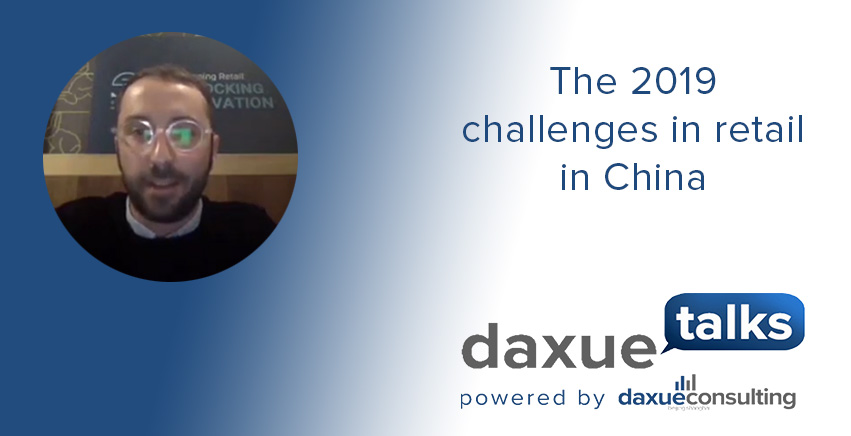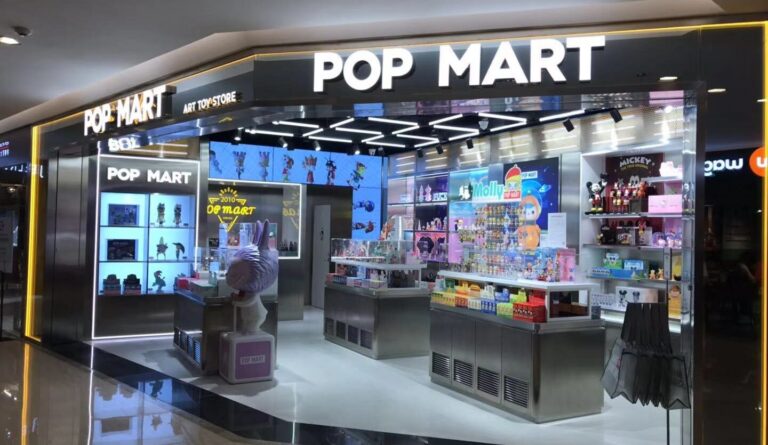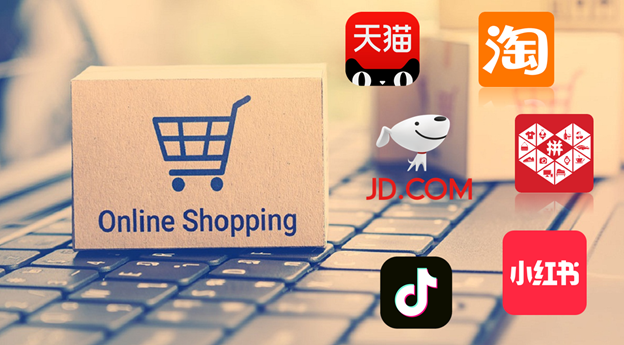Find here the Daxue Talks episode 24. Learn from Max Peiro the biggest challenges in retail in China traditional brands have faced amd how to overcome these obstacles in 2020.
Full transcript below:
Max Peiro: My name is Max Peiro. I’m obviously not Chinese. I’m from Barcelona, but I’ve been living for 12 years in Shanghai. And I am the CEO of Re-Hub. At Re-Hub, basically, we are problem solvers. We work with large corporations here in China to help them identify business challenges and match them with proven startups that can solve these problems.
Interviewer: How is the retail situation in China? What are the challenges traditional retail brands are facing now?
Max Peiro: I think that we see as a global trend that retail is changing very fast. I like to call it the retail revolution. Some other people would call it the retail apocalypse. I try to be optimistic so I prefer to call it revolution. And it’s a global trend, definitely. But I just think that in China, things tend to happen much faster. I think overall, at macro level, there are a few things that happen that trigger this revolution or change. First—and I think this is quite obvious—there has been a power shift from brands to consumers. Nowadays, consumers have all the information available one click away. They are fully digital. So right now, they have all the power. On the other hand, the competition is fierce not only from traditional competitors, but also obviously from marketplaces. Tmall is a great example. JD is also an example. There is also the growing influence of Wechat in everyday lives. There is also competition from online brands that are extremely agile, flexible, and aggressive. There is competition from new business models—direct to consumer and live streaming. So, it’s becoming much tougher for these brands to thrive and to survive in this fast-changing environment. At the end of the day, I think that the only way for these brands to survive in China is to have a very clear strategy for the Chinese market and to empower the local teams for execution. The trends or what is happening in China compared to the West is diverging more and more. So, localization in China in terms of decision making, strategy, and execution is super important.
And let me give you a couple of examples on brands that I think in my opinion are doing a great job on localization and really empowering the Chinese teams. One of them is Uniqlo. I think that for many years, they’ve been really empowering the team in China to make decisions locally. And they are one great example of a brand openly working with a lot of different startups with a focus on customer-centricity—anything from data to customer experience. And I don’t know if it’s a result of that but it’s one of the top fashion brands in China. And I would say another example is Anheuser-Busch InBev, the beer company. They are the owners of Budweiser, Stella, and also local beers like Harbin. I think for many years, they bet on the importance of the Chinese market. I believe that nowadays, China is their largest market or the second-largest market. I’m not sure about that. But also, they’ve been really learning about China, understanding their needs, and localizing. And I think that one very good example when it comes to innovation is that they set up an innovation team that is able to work with different business units, understand the different challenges that these business units face, and then find startups here locally that can empower them.
Interviewer: In China, lower-tier city consumers start to play a more important role. What should brands do to better reach them out?
Max Peiro: That’s a very good question. That’s a very hot topic nowadays. And obviously, in China right now, most of the growth is coming from lower-tier cities. And we’re not talking anymore about third or fourth-tier cities. We are talking about fifth or six-tier cities. And I think this is a huge challenge for international brands. It’s a completely different world. When international brands or many foreigners like myself based in Shanghai think about China, we tend to think about Shanghai, Shenzhen, and these extremely modern dynamic cities. But I think lower-tier cities are a totally completely different world from that. And it’s challenging to adapt to the situation or environment. I think that the good thing is that nowadays there are massive amounts of data and brains can leverage this amount of data to understand what is the potential in these market segments, understand who are their target customers there, and then be able to target them. A great starting point can be Tmall. There is massive amount of data available on Tmall about customers’ behavior. They can use these to really understand and analyze for segments. They also have Wechat to collect data from users across different geographies in China and then be able to unify and to deliver insights based on that. Only when they have a very clear picture of the consumers in these lower-tier cities can they pull together a proper strategy and then execute.
I think another advantage of lower-tier cities is obviously these brands have no exposure. They don’t have a retail network there and there is no brand awareness. But the good thing is that users in lower-tier cities rely more and more on the internet to know about fashion trends to discover brands. So, it’s about these brands fully leveraging the digital channels available to start reaching out to these consumers and then build their brand and their value proposition from that.
Any questions? We will find an expert to answer them. Drop your questions in the comments or send us an email at dx@daxueconsulting.com





